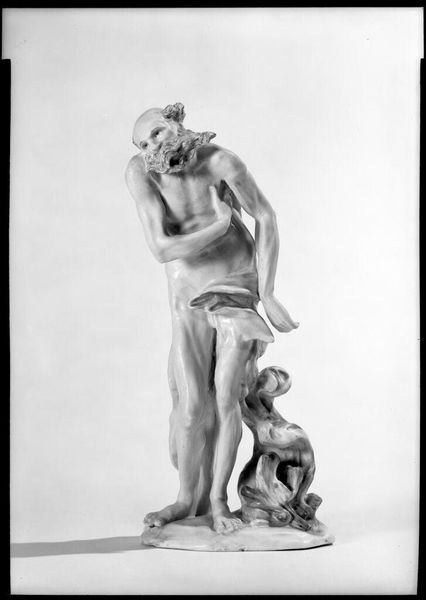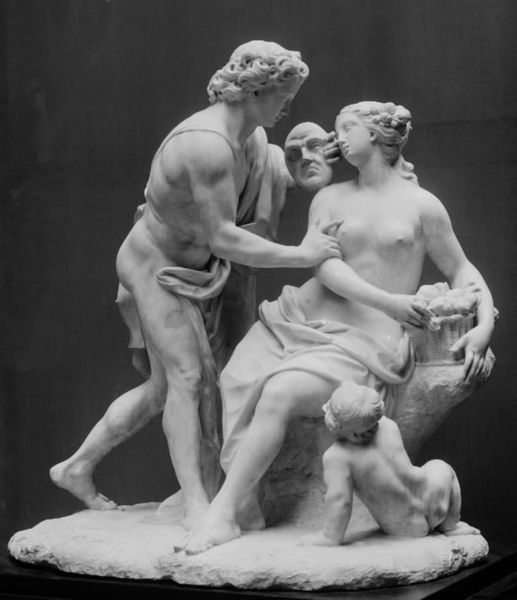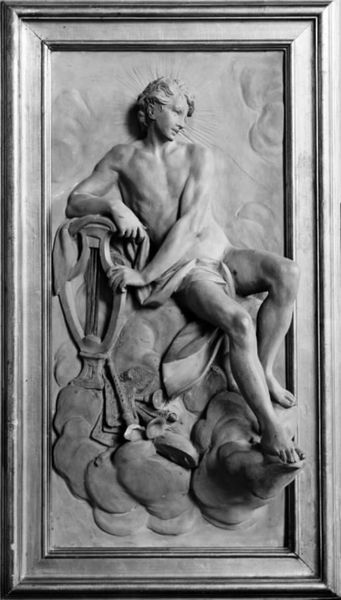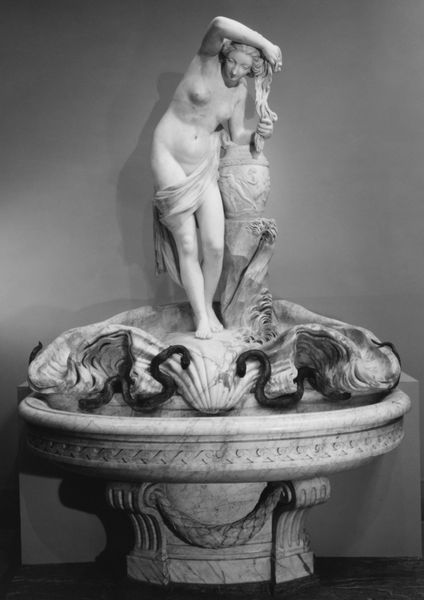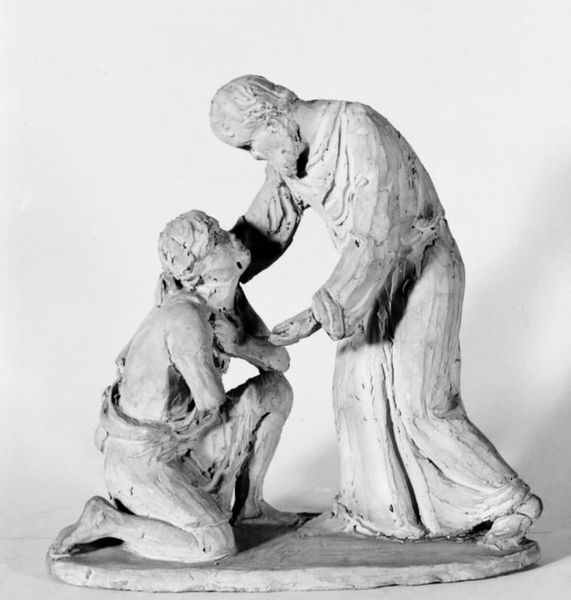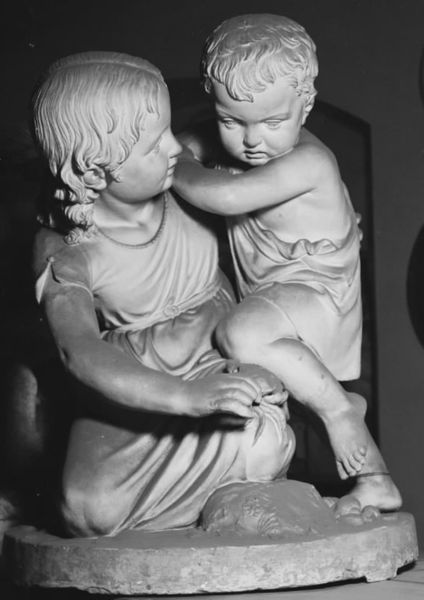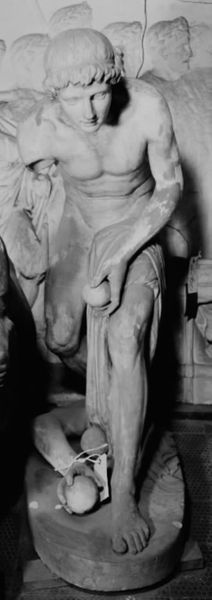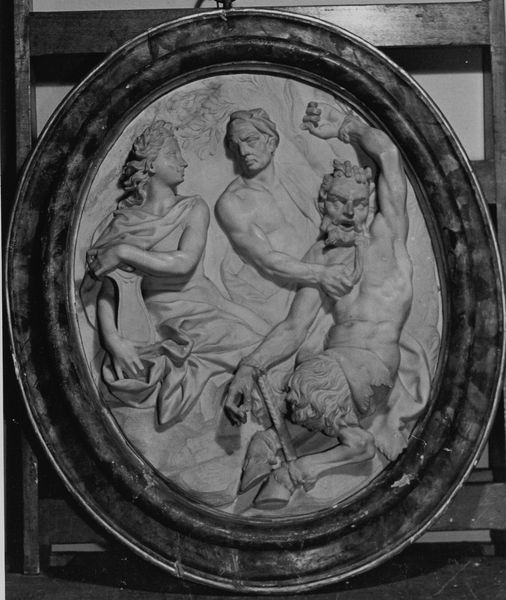
sculpture
#
sculpture
#
figuration
#
sculpture
#
monochrome
#
realism
#
monochrome
Dimensions: 113 cm (height) x 97.5 cm (width) x 64 cm (depth) (Netto)
Curator: This monochrome sculpture is titled "En fisker lærer en lille dreng at spille fløjte," which translates to "A Fisherman Teaches a Small Boy to Play the Flute." Created in 1859 by O. Evens, it resides here at the SMK, the Statens Museum for Kunst. Editor: Immediately, I’m struck by the intimacy, the implied tenderness of this exchange. The artist has clearly focused on the mentorship of the child with close proximity of figures and strong monochrome tones. The figures dominate all visual fields with minimal negative space in the overall construction. Curator: Yes, that intimate tutor relationship speaks volumes within its historical moment. The 19th century saw an emphasis on childhood education, intertwined with the era's socio-economic changes. The sculpture is created during this backdrop and promotes learning and skill transfer within society. Editor: From a formalist standpoint, I find the lack of stark tonal contrasts very interesting. This absence promotes visual harmony with soft edges and delicate lines used for detail that brings the figures together conceptually and formally. Even the drapery softly caresses the body without competing for visual importance within the monochrome scheme. Curator: It's also significant that the sculpture embodies elements of realism, yet its idealization promotes certain cultural values of paternal mentorship and youth improvement during this period. Do you consider the piece idealized from an internal structure perspective? Editor: Definitely. The balance of form with the use of delicate tonal change suggests a level of ideality. While being clearly realistic it offers its forms with idealized balance promoting smooth harmonious figures with implied texture with low variation. This harmony suggests not just tonal balance but philosophical calm and clarity. Curator: A relevant point. The positioning within the collection encourages considerations of how these social and cultural values evolved, reflecting on artistic approaches in representing subjects during periods of Danish artistic production. Editor: Overall, I’m impressed by how Even's skillful use of subtle aesthetic choices builds an intriguing, if gentle and harmonious dynamic through the sculpture itself. It promotes the subject beyond mere realism into symbolic ideals of the era. Curator: A telling contribution, particularly concerning its societal reflection that persists to the current time within current collections. It definitely deserves more time to discover all levels of information.
Comments
No comments
Be the first to comment and join the conversation on the ultimate creative platform.

